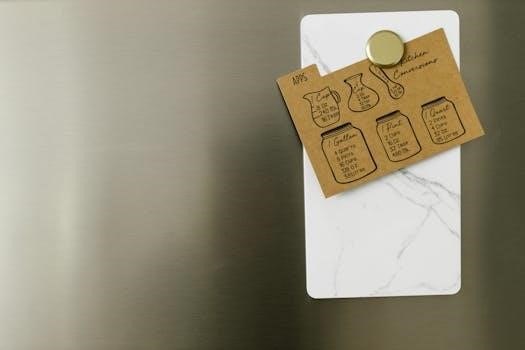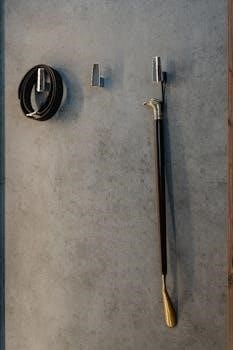Zone 7 offers a substantial growing season, allowing gardeners to cultivate a wide variety of vegetables.
Knowing the optimal planting times is crucial to prevent frost damage and ensure a bountiful harvest.
This guide provides a planting schedule tailored for Zone 7.
Understanding Zone 7 Climate
Zone 7 is a region defined by specific climate conditions ideal for vegetable gardening.
Characterized by a moderate growing season, it provides ample time for most vegetable varieties to mature before the first frost.
The average last frost date falls around April 15th, while the first frost typically arrives around November 15th, giving approximately seven months of gardening time;
However, these dates can vary by a week or two, emphasizing the importance of monitoring local weather forecasts.
This extended growing window allows for planting a diverse range of vegetables, including both warm-season and cool-season crops.
Understanding the nuances of Zone 7’s climate, including temperature fluctuations and average rainfall, is essential for planning a successful vegetable garden.
Factors such as microclimates within your specific location can also influence planting decisions.
Pairing general Zone 7 knowledge with local expertise and careful observation will contribute to a thriving garden.
It is important to note that climate change is a factor and the climate might be different in the future.
Climate change should be taken into consideration as much as possible.
Frost Dates in Zone 7

Determining the average first and last frost dates is essential for successful vegetable gardening in Zone 7.
These dates serve as crucial benchmarks for planning your planting schedule, ensuring that tender plants are not exposed to damaging frost.
In Zone 7, the average last frost date typically falls around April 15th, marking the beginning of the safe planting season for most vegetables.
However, it’s important to remember that this is just an average, and actual frost dates can vary from year to year.
Similarly, the average first frost date in Zone 7 occurs around November 15th, signaling the end of the main growing season.
Again, this date is an average and can fluctuate depending on the specific weather patterns of the year.
To obtain more accurate frost date predictions for your specific location within Zone 7, consult local weather forecasts, agricultural extension offices, or experienced gardeners in your area.
Keep in mind that microclimates within your garden, such as sheltered areas or raised beds, can also influence frost occurrence.
Monitoring weather conditions closely, especially during the spring and fall, is crucial for protecting your plants from unexpected frost.
Employing frost protection measures like row covers or cold frames can help extend the growing season and safeguard your crops.
Adapt your planting schedule based on the actual frost dates in your area.
Importance of Planting Schedule
Adhering to a well-structured planting schedule is paramount for maximizing vegetable garden productivity in Zone 7.
A planting schedule acts as a roadmap, guiding gardeners on when to sow seeds, transplant seedlings, and anticipate harvests.
By aligning planting activities with the optimal timing for each vegetable, gardeners can ensure vigorous growth, abundant yields, and minimize potential risks.
Planting too early can expose tender seedlings to damaging frosts, while planting too late may result in crops not reaching maturity before the first frost of fall;
A planting schedule takes into account factors such as frost dates, soil temperatures, and the specific needs of different vegetables.
It helps gardeners optimize their use of the growing season, ensuring that each crop has ample time to develop and produce.
Furthermore, a planting schedule allows for succession planting, where multiple crops of the same vegetable are planted at intervals to extend the harvest period.
This ensures a continuous supply of fresh produce throughout the growing season.
A well-planned schedule also facilitates crop rotation, a practice that involves alternating different vegetable families in the same garden beds to improve soil health and reduce pest and disease problems.
By following a planting schedule, gardeners can streamline their gardening activities, avoid costly mistakes, and enjoy a more rewarding and productive vegetable gardening experience.
It’s important to tailor your planting schedule to your specific microclimate.
Zone 7 Planting Calendar
A Zone 7 planting calendar serves as an indispensable tool for gardeners, providing a month-by-month guide to planting vegetables at the optimal times.
This calendar takes into account the specific climate conditions of Zone 7, including average frost dates and temperature ranges, to ensure that crops are planted when they have the best chance of success.
The calendar typically includes information on when to start seeds indoors, when to direct sow seeds outdoors, and when to transplant seedlings into the garden.
For example, cool-season crops like lettuce, spinach, and radishes can be planted in early spring, while warm-season crops like tomatoes, peppers, and cucumbers should be planted after the last frost.
The calendar also provides guidance on succession planting, allowing gardeners to stagger plantings of the same crop to extend the harvest season.
Additionally, the calendar may include information on specific varieties that are well-suited to Zone 7 conditions.
By following a Zone 7 planting calendar, gardeners can ensure that their vegetables are planted at the right time, maximizing their chances of a successful harvest.
Consulting a planting calendar tailored to Zone 7 is a proactive step towards a flourishing vegetable garden.
Remember to adjust the calendar based on microclimates.
It’s also helpful to keep records of past planting dates and harvest times to refine your calendar over time.
Spring Planting Guide for Zone 7
Spring in Zone 7 is a vibrant time for vegetable gardening, offering a window of opportunity to plant a variety of crops.
A spring planting guide for Zone 7 outlines the best vegetables to plant during this season and provides a timeline for planting based on average frost dates.
Cool-season crops thrive in the cooler temperatures of early spring, including leafy greens like lettuce, spinach, and kale, as well as root vegetables like carrots, radishes, and beets.
These crops can be planted as soon as the ground can be worked, typically a few weeks before the last expected frost.
As the weather warms up, gardeners can begin planting warm-season crops like tomatoes, peppers, and eggplants, but only after the danger of frost has passed.
It’s essential to monitor the weather forecast and protect tender seedlings from unexpected late frosts.
Starting seeds indoors is a great way to get a head start on the growing season, especially for crops that require a longer growing period.
A spring planting guide also provides tips on soil preparation, watering, and fertilizing to ensure that plants get off to a strong start.
By following a spring planting guide for Zone 7, gardeners can maximize their yields and enjoy a bountiful harvest throughout the season.
Remember to consider microclimates in your garden.
Always harden off seedlings before transplanting;
Summer Planting Guide for Zone 7
Summer in Zone 7 presents a second opportunity for vegetable gardeners to extend their growing season.
The summer planting guide for Zone 7 focuses on planting crops that thrive in warm weather and mature quickly before the arrival of cooler temperatures in the fall.
This period is ideal for succession planting of vegetables like beans, cucumbers, and summer squash, ensuring a continuous harvest throughout the summer and into the early fall.
Heat-tolerant varieties of leafy greens such as spinach and lettuce can also be planted, but they require careful monitoring for adequate watering and shade during the hottest part of the day.
Consider planting heat-loving herbs like basil, oregano, and thyme, which flourish in the summer sun.
Summer is also an excellent time to plant fast-maturing vegetables like radishes and carrots for a quick crop.
When planting in the summer, it’s crucial to provide adequate water to plants, especially during periods of drought.
Mulching can help retain moisture in the soil and prevent weeds from taking over.
Protecting plants from pests and diseases is also essential in the summer, as these can quickly spread in warm, humid conditions.
By following a summer planting guide for Zone 7, gardeners can maximize their yields and enjoy a continuous supply of fresh vegetables throughout the season.
Monitor plants regularly for signs of stress or disease.
Harvest vegetables promptly to encourage further production.
Fall Planting Guide for Zone 7
As summer transitions into fall, Zone 7 gardeners have a final opportunity to plant vegetables for a late-season harvest.
The fall planting guide for Zone 7 focuses on cool-season crops that thrive in the cooler temperatures and shorter days of autumn.
This is an ideal time to plant leafy greens like lettuce, spinach, kale, and arugula, which prefer cooler conditions and can tolerate light frosts.
Root vegetables such as carrots, radishes, and turnips can also be planted in the fall for a late harvest.
Broccoli, cabbage, and cauliflower are other excellent choices for fall planting in Zone 7, as they benefit from the cooler temperatures and can mature before the first hard frost.
Garlic and shallots can be planted in the fall to overwinter and produce a crop the following summer.
When planting in the fall, it’s important to choose varieties that have a shorter maturity time to ensure they have enough time to grow before winter sets in.
Protecting plants from frost is crucial in the fall, so consider using row covers or cold frames to extend the growing season.
Mulching can also help protect plants from cold temperatures and conserve moisture in the soil.
By following a fall planting guide for Zone 7, gardeners can enjoy a late-season harvest of fresh, delicious vegetables even as temperatures drop.
Continue to water plants as needed.
Watch out for pests that may become more active in the cooler weather.
Starting Seeds Indoors in Zone 7
Starting seeds indoors in Zone 7 is a great way to get a head start on the growing season, especially for plants that require a long growing period.
Starting seeds indoors allows gardeners to control the growing environment and protect seedlings from harsh weather conditions.
The ideal time to start seeds indoors in Zone 7 depends on the specific vegetable and its days to maturity.
Generally, vegetables like tomatoes, peppers, and eggplants should be started indoors 6-8 weeks before the last expected frost date.
Broccoli, cabbage, and cauliflower can be started indoors 4-6 weeks before the last frost.

When starting seeds indoors, use a high-quality seed-starting mix and provide adequate light, either through grow lights or a sunny window.
Keep the soil consistently moist but not waterlogged, and maintain a temperature of 70-75°F for optimal germination.
Once the seedlings emerge, thin them to one plant per cell or pot and provide regular fertilization with a balanced liquid fertilizer.
Before transplanting seedlings outdoors, gradually acclimate them to outdoor conditions through a process called hardening off.
This involves gradually exposing the seedlings to increasing amounts of sunlight and outdoor temperatures over a period of 1-2 weeks;
By starting seeds indoors, Zone 7 gardeners can ensure a strong and healthy start for their vegetable plants and enjoy an earlier harvest.
Make sure you follow all of these steps to ensure a good start to your planting this year.
Direct Sowing in Zone 7
Direct sowing, or planting seeds directly into the garden soil, is a simple and effective method for many vegetables in Zone 7.
This method eliminates the need for transplanting, reducing the risk of transplant shock and saving time.
The best time to direct sow seeds in Zone 7 depends on the specific vegetable and its cold hardiness.
Cool-season crops like lettuce, spinach, radishes, and carrots can be direct sown in early spring, as soon as the soil can be worked.
Warm-season crops like beans, corn, squash, and cucumbers should be direct sown after the last expected frost date when the soil has warmed up.
Before direct sowing, prepare the soil by removing weeds, amending with compost, and leveling the surface.
Sow seeds at the recommended depth and spacing, and water gently to avoid washing them away.
Keep the soil consistently moist until the seeds germinate and the seedlings emerge.
Thin the seedlings as needed to provide adequate spacing for growth.
Direct sowing is a great option for vegetables that don’t transplant well or that grow quickly.
It also allows for succession planting, where you sow seeds every few weeks to extend the harvest season.
Consider the specific needs of each vegetable when deciding whether to direct sow or start seeds indoors.
By understanding the optimal timing and techniques for direct sowing, Zone 7 gardeners can maximize their vegetable yields.
Make sure that you read the seed packets to understand the needs of each plant.
Cold-Hardy Vegetables for Zone 7
Zone 7‘s climate, with its moderate winters, allows for the successful cultivation of a variety of cold-hardy vegetables.
These vegetables can withstand frost and even light freezes, making them ideal for extending the growing season into the cooler months.
Choosing the right cold-hardy vegetables can provide a continuous harvest throughout the fall, winter, and early spring.
Some of the most popular cold-hardy vegetables for Zone 7 include leafy greens like spinach, kale, lettuce, and arugula.
Root vegetables such as carrots, beets, turnips, and parsnips also thrive in cooler temperatures.
Cruciferous vegetables like broccoli, cauliflower, cabbage, and Brussels sprouts are well-suited for Zone 7‘s climate.
Other cold-hardy options include onions, garlic, leeks, and peas.
When planting cold-hardy vegetables, it’s important to choose varieties that are specifically bred for cold tolerance.
Planting these vegetables in the fall allows them to establish strong root systems before the onset of winter.
Protecting cold-hardy vegetables with row covers or cold frames can further extend their growing season.
Harvesting cold-hardy vegetables regularly encourages continued production.
Some cold-hardy vegetables, like kale and collards, even taste better after a frost.
By selecting and planting the right cold-hardy vegetables, Zone 7 gardeners can enjoy fresh, homegrown produce year-round.
These vegetables are a great way to add variety and nutrition to your diet during the colder months.
Be aware that these plants can also be planted earlier than most.
Extending the Growing Season in Zone 7
Zone 7 gardeners can significantly extend their growing season by employing various techniques and strategies.
While Zone 7 boasts a relatively long growing season, maximizing yields and enjoying fresh produce for more months is always desirable.
One effective method is starting seeds indoors several weeks before the last expected frost.
This gives plants a head start and allows for earlier transplanting into the garden.
Another popular technique is using season extension structures like cold frames, hoop houses, and row covers.
These structures provide protection from frost, wind, and other harsh weather conditions, allowing plants to thrive even in cooler temperatures.
Cold frames are simple, enclosed structures that can be used to harden off seedlings or protect cold-hardy crops.
Hoop houses are larger, semi-permanent structures that provide more space and better insulation.
Row covers are lightweight fabrics that can be draped directly over plants to protect them from frost and pests.
Choosing the right plant varieties is also crucial for extending the growing season.
Select cold-hardy varieties that can tolerate frost and continue to produce even in cooler temperatures.
Succession planting, or planting crops at regular intervals, is another effective way to extend the harvest season.

By planting new crops every few weeks, gardeners can ensure a continuous supply of fresh produce.
Mulching helps to retain soil moisture and regulate soil temperature, which can also extend the growing season.
Consider using thermal mass such as water jugs to passively heat your greenhouse.
With these techniques, Zone 7 gardeners can enjoy a longer and more productive growing season.











